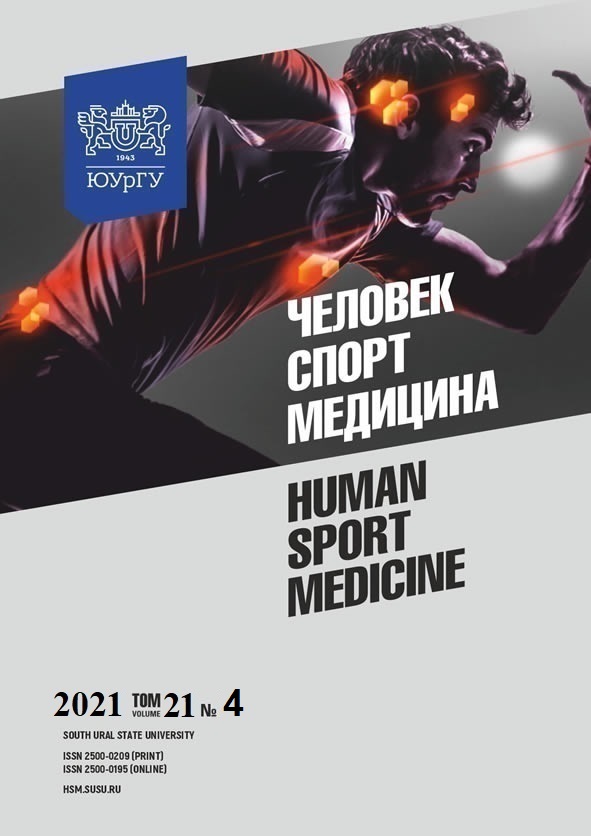INCREASING THE ADAPTIVE POTENTIAL OF UNIVERSITY STUDENTS WITH WATER TRAINING
Abstract
Aim. The paper aims to identify the effect of water training on adaptive potential, cerebral circulation, and body composition. Materials and methods. The study involved 40 female students (mean age 17 ± 0.45 years). The Mitsar-REO analyzer was used for measuring cerebral circulation in the frontal mastoid area. The typology and functional variability of body composition were studied by measuring body weight and morphological parameters with the Tanita BC-418MA body composition analyzer. Results. During the study, the features of cerebral hemodynamics and body composition were established in female students involved in water training. The degree of changes in vascular tone was identified, which indicated the level of cerebral blood supply. A gradual improvement of carotid blood flow, blood filling, cerebral circulation, cerebral tone, vscular elasticity and venous outflow was found in female students of the main group during nine months of water training. Statistically significant differences were found between body composition of female students with different levels of physical activity. In the main group, there were no significant changes in body water compared to the physiological norm. In the control group, at the end of the academic year, a decrease in the level of body water was found. The largest values of the basal metabolism were found in students of the main group. In the main group, by the end of the study, there was a decrease in body fat mass and an increase in fat-free mass. Conclusion. The results of the study allowed to identify the features of cerebral hemodynamics and body composition in female students during the academic year and showed the usefulness of water training as additional physical activity in terms of increasing the adaptive potential of university students experiencing emotional overload. The effects of water training are considered as an adaptive resource that contributes to the achievement of optimal balance between body composition and cerebral hemodynamics, which is the physiological basis of mental and physical activity.
References
References on translit
Copyright (c) 2022 Human. Sport. Medicine

This work is licensed under a Creative Commons Attribution-NonCommercial-NoDerivatives 4.0 International License.















